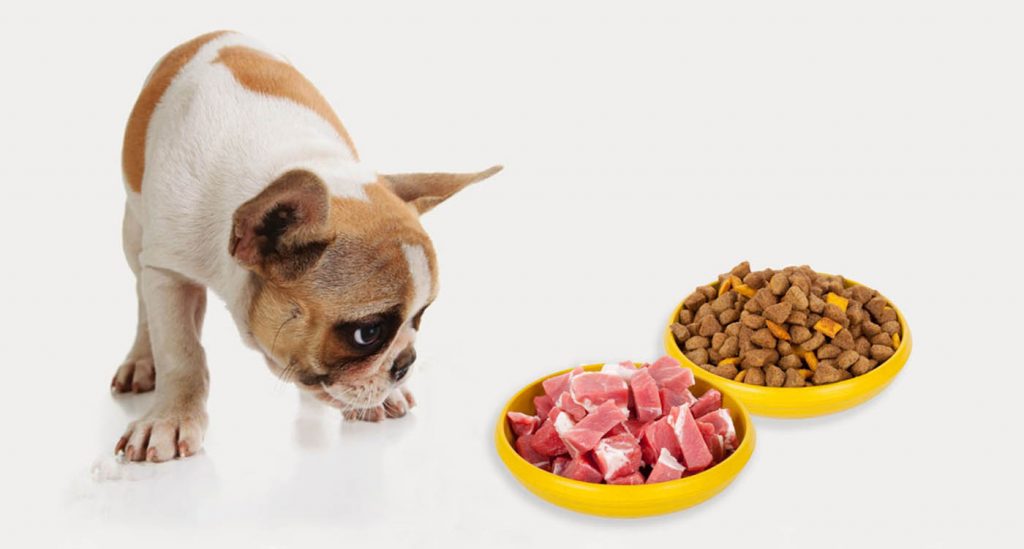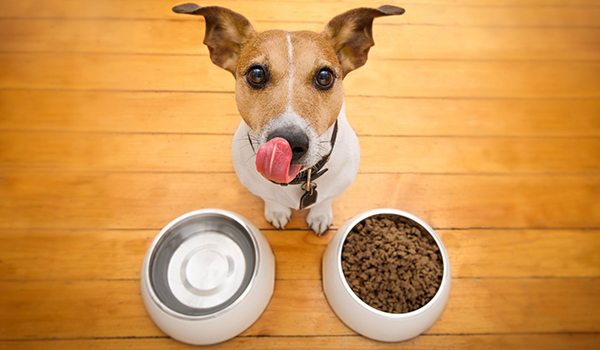
Walk into any U.S. pet store and you’ll see entire aisles of dog food—cans, kibble bags, and freezers of raw patties. Each type has its fans and critics. This guide breaks down the three most common dog-food formats—wet, dry, and raw—so you can make an informed decision based on your dog’s health, your budget, and your lifestyle.
Wet (Canned) Dog Food
What it is:
Canned or pouched food with high moisture content (about 70–80%). Comes in chunks, pâté, or stew-style textures.
Pros:
- High palatability: Dogs usually find it tastier than kibble.
- More moisture: Helpful for dogs that don’t drink much water or have urinary/kidney concerns.
- Soft texture: Easier for puppies, seniors, or dogs with dental issues.
Cons:
- Cost: More expensive per calorie than dry food.
- Storage: Open cans must be refrigerated and used quickly.
- Dental health: Doesn’t provide the abrasive crunch of kibble.
Best for: Picky eaters, older dogs, or dogs needing extra hydration.
Dry (Kibble) Dog Food
What it is:
Extruded pellets of compressed ingredients with low moisture (about 8–12%).
Pros:
- Convenience & shelf life: Easy to measure, store, and keep fresh.
- Cost-effective: Cheaper per calorie than wet food.
- Dental benefits: Crunch can help reduce tartar (though not a replacement for brushing).
- Complete formulas: Most meet AAFCO standards for balanced nutrition.
Cons:
- Lower moisture: Dogs must drink enough water separately.
- Less aroma/taste: Some dogs find it less appealing.
- Quality varies: Some low-end kibbles use fillers or lower protein levels.
Best for: Most healthy adult dogs, multi-dog households, owners who need convenience.
Raw Dog Food
What it is:
Uncooked meat, bones, and sometimes organs, fruits, or vegetables. Sold frozen, freeze-dried, or prepared at home. Marketed as “BARF” (biologically appropriate raw food) diets.
Pros:
- Minimal processing: Appeals to owners who want a “natural” diet.
- High protein & moisture: Some dogs show shinier coats, firmer stools.
- Customizable: Owners can tailor ingredients.
Cons:
- Pathogen risk: Raw meat can carry bacteria like Salmonella or E. coli—risk for pets and humans.
- Nutritional imbalance: Homemade raw diets can miss essential nutrients without a veterinary-formulated recipe.
- Cost & storage: More expensive; needs freezer space and careful handling.
Best for: Owners committed to careful preparation and hygiene, ideally under veterinary nutritionist guidance.
| Feature | Wet (Canned) | Dry (Kibble) | Raw (Frozen/Freeze-Dried) |
|---|---|---|---|
| Moisture | High (70–80%) | Low (8–12%) | High (varies) |
| Cost per calorie | Higher | Lower | Highest |
| Convenience | Medium (needs fridge) | High (no fridge) | Low (needs freezer) |
| Palatability | High | Moderate | High |
| Dental benefits | Low | Moderate (some crunch) | None (unless raw bones) |
| Safety risk | Low | Low | Higher (bacteria) |
Which Should You Choose?
There’s no single “best” format. Consider your dog’s:
- Age & health: Seniors may do better with wet food; healthy adults often thrive on quality kibble; raw diets should be vet-supervised.
- Hydration needs: Dogs prone to urinary issues may benefit from wet food.
- Budget & storage: Dry food wins for affordability and convenience.
- Lifestyle & time: Raw diets require more prep, freezer space, and safety protocols.
Pro tip: Some owners mix types—like adding a spoon of wet food to kibble for flavor or using raw freeze-dried toppers—to balance convenience, cost, and taste.
Bottom Line
All three options—wet, dry, and raw—can provide complete nutrition when formulated correctly and handled properly. Work with your veterinarian to pick what’s best for your dog’s age, activity level, and health conditions. Remember, the “best” food is the one that keeps your dog healthy, happy, and excited for mealtime.




